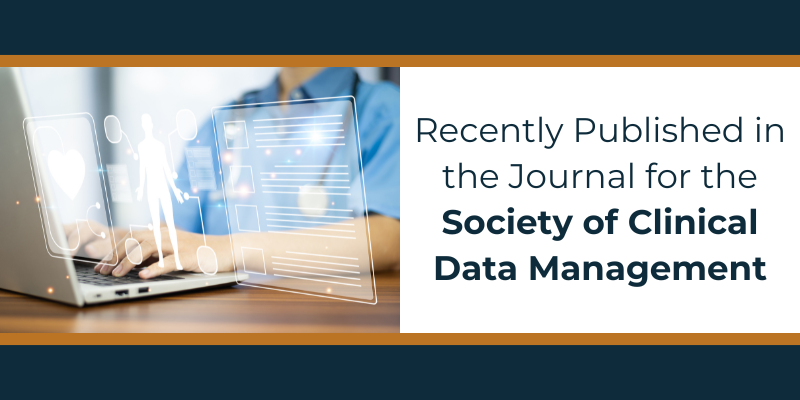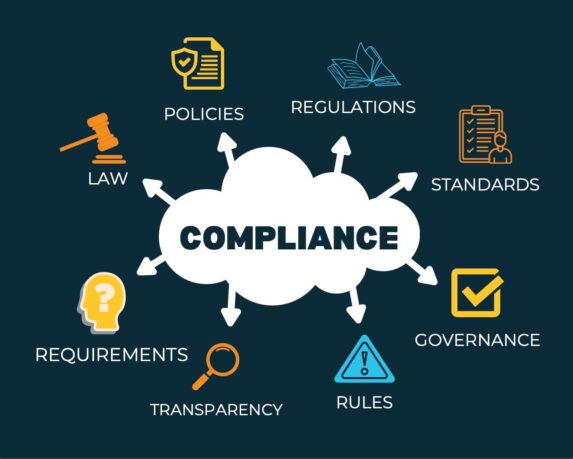Leveraging eSource as a Study Manager for Remote Monitoring

Increased efficiencies
Despite the myriad of additional issues caused by COVID, our study team’s efficiency dramatically increased with remote monitoring.
I have long been a proponent of the potential of eSource and its advantages in clinical trials. From my experience as a CRA (Clinical Research Associate) I first wrote about eSource in November 2018, SOCRA and January 2019, ACRP, which enabled me to see that clinical research was only just scratching the surface on leveraging eSource to fundamentally change the way we monitoring clinical trials. At the time, I did not expect to find myself in a position to make a meaningful shift towards remote monitoring. Several years later, while working as a CTM (Clinical Team Manager) on Phase III Global Pivotal IND NASH (Non-alcoholic steatohepatitis) study, COVID forced CROs (Contract Research Organizations) to rethink their monitoring paradigm. Drawing from both my own and my team’s experience with CRIO, our study was able to successfully implement a remote monitoring process to mitigate the issues of running a clinical trial during a pandemic. CRIO is the leader in eSource with over 1,000 sites globally using their technology, and it was already being used at several of our sites. Even as someone who had long advocated for remote monitoring using eSource, I found myself astounded at the success our team achieved.
As a CRA in 2018, I was fortunate to come across several research sites that were early adopters of eSource, most commonly CRIO. The benefits of eSource were immediately evident for sites. Switching to eSource dramatically reduced the workload for sites by streamlining their entire process. The improved efficiencies in data entry vs handwritten notes, along with a clear step-by-step process for each specific visit, reduced patient visit times. Site’s leveraging eSource also had a significant reduction in errors and missed procedures thanks to real-time data validation. When I did find errors, the audit logs and queries directly on the eSource page were considerably easier to close than the traditional pile of sticky notes monitors are accustomed to utilizing.
One of the inefficiencies I previously noted in earlier publications, is the lack of standardization in site source. Too much time is spent as a CRA familiarizing yourself with each site’s specific source. Due to every site creating their unique source, it is not uncommon for critical data points to go un-captured at the beginning of a study. Standardization of the initial source would reduce the workload of both sites and CRAs while ensuring critical data points are not missed – this increases the likelihood of noticing trends across sites. With eSource tools like CRIO, standardization is more easily managed with protocol amendments and clearer version control.
I have seen firsthand sites leverage eSource in several surprising ways. Some sites indicated that using eSource allowed them to work with even more doctors and in different therapeutic areas. With the ability for PIs and Sub-Is to review patients’ charts as eSource from their private practices or homes, the burden on doctors is greatly reduced. PI and Sub-I review times of adverse events are reduced since they no longer need to physically travel to the research office to review charts. One site I encountered even outsourced EDC entry of their source to an offsite facility in a different state.
The benefits of eSource for CROs
While eSource offers many advantages to research sites, I believe eSource benefits CROs even more.
To unlock the full potential of eSource by enabling remote monitoring, a study needs the buy-in of both the CRO and Sponsor. I had been pushing several years at my CRO to try to implement remote monitoring leveraging eSource to no avail.
The pivot: from onsite to remote monitoring
Everything changed when COVID shut down onsite monitoring.
Remote monitoring was no longer just an idea or small add-on, it was something we needed immediately and should have started implementing years ago. Flights were getting canceled, CROs grounded CRAs, and sites decided the last people they wanted to see were CRAs who had traveled through three major airports that week. As soon as the impact of COVID became evident, I started working with our study team and sponsor towards potential solutions. Reaching out to our study sites, we identified several sites using eSource and most frequently CRIO. CRIO provides a full eSource suite for clinical research sites including, CTMS, payments, patient recruiting, eREG and more. Sites that had standardized on CRIO were able to continue recruiting patients and running trials with minimal to no interruptions. This was not the case for sites that had not made the switch to eSource.
Our team pulled in resources from data management, the sponsor, sites, and our clinical team to amend our study monitoring plan to allow for remote monitoring visits resulting in improved monitoring metrics across the board.
While other study teams were at the mercy of COVID restrictions, our team achieved some of our highest metrics. Our company’s expectation is around the industry average for DOS (days on site) requiring CRAs to do in-person onsite monitoring at a research site 8 – 10 days per month. Virtually every study struggled to have CRAs meet their DOS metrics as sites were closed. Even once sites reopened to allow CRAs, the back log from other studies caused a ton of intra-study competition for space on site for monitors. Many research sites had additional staffing issues related to cutbacks from COVID that further exacerbated the issue of getting monitoring time on site. With the implementation of remote monitoring, our CRAs exceeded their traditional DOS metrics resulting in more pages monitored, improved patient safety due to the reduction of monitoring lag times, and improved CRA efficiency in no longer losing valuable time to travel.
After a few successful trial remote monitoring visits with CRIO, the study team started to reach out to more sites to see if there were any others using potential eSource solutions. We identified two sites that were using RealTime CTMS as a potential eSource solution. While RealTime did seem to have the potential to be used as a CRF Part 11 compliant eSource, we were met with mixed results. One site was successfully using RealTime in a way that met industry standards for source data capture, however CRAs page monitoring rates were a bit lower than sites using CRIO. The other site was not using RealTime in a way that was CRF Part 11 compliant and continued to be an issue throughout the study. We had several sites implement eSource mid-study as a COVID mitigation with mixed results. While implementing eSource mid-study allowed us to remotely monitor new study information, it remained a challenge to source and verify data for earlier visits. Some coordinators reported issues on learning a new system mid-study as well as an additional burden. Ideally an eSource solution is implemented prior to study start. While eSource has great potential, it is critical that due diligence is being done when selecting a vendor and that there is a defined plan to ensure successful implementation.
On our study we also utilized a hybrid model for monitoring support. Our monitors would attempt to achieve their full DOS expectations at their dedicated sites, however logistics with COVID made this impossible. Last minute cancellations due to new policies, COVID outbreaks at site, flight cancellations and site closures, often left our monitors without scheduled DOS.
Sites with eSource can accommodate many monitors with much shorter notice since they do not need to plan for physical space for the monitors. Monitors on site are more disruptive to a study coordinator who likely has patients to see. With eSource queries, study coordinators were willing and able to accommodate last minute visits and address study findings without the visit disrupting their schedules.
Outside of the obvious increase in DOS we achieved with our monitors not losing time to travel, our study team also saw an increase in the number of pages monitored per day with the remote model.
Our monitors gained quicker access to study data without the restriction of planning on-site visits. Early access to data meant errors were captured promptly and corrective action implemented faster. With corrective actions in place, our sites participating in the remote monitoring saw fewer overall errors.
Study timelines were much more easily managed for our sites participating in remote monitoring. Last minute visits were no trouble to schedule for our sites enrolling their 1st patient allowing our study team to meet our monitoring plan requirement of monitoring the 1st patient within 2 weeks of enrollment. Data management batch cleaning for database locks were also easy to schedule and hit for our team with remote monitoring due to reduced friction in scheduling. Medical review timelines were met with remote monitoring access to data, cutting out the middleman from PI to Medical Monitor by allowing for direct source access.
Our study team was more efficient when monitoring with multiple screens from the comfort of their home office as opposed to being crammed in a makeshift monitoring room. This change in the monitoring workflow resulted in improved monitor retention as many studies had monitors leaving the clinical trials industry completely. Even from our less tech savvy monitors, the feedback was unanimous:
Remote monitoring was their preference due to lifestyle comfort, efficiency in monitoring, and ease of scheduling.
Our monitors were happy to up their DOS from their 8 – 10 expected to as high as 12 – 16 when it meant not having to fight long hours at airports away from their families. Our study was so successful due to our implementation of remote monitoring, that our study alone accounted for over 25% of our 3rd quarter revenue.
Additional benefits of implementing remote monitoring
The study greatly exceeded revenue expectations despite the pandemic.
Our study implemented remote monitoring as a COVID mitigation. While I was excited to finally leverage eSource to enable remote monitoring, it is disappointing that is took a global pandemic for clinical trials to finally wake up to the 21st century. Remote monitoring should be the integral component of every clinical trial. With remote access to source study data, the model of dedicating an entire DOS to one specific site will change.
Added value towards study and improve patient safety
Specific visits – like enrollment – and pages, like adverse events, can be prioritized study wide for monitors.
Continuous monitoring breaks the traditional monitoring cycle. Trip reports are based on the frequency monitors can get onsite and are not always an accurate representation of the amount of work being performed at a given site. Continuous monitoring allows for regular reporting for individual sites to be run and written at scheduled intervals to improve their value. Regular reporting across all sites also allows for easy site to site comparisons. Performing site to site comparisons makes it easy for study teams to identify high-risk sites allows for true risk-based monitoring. Risk-based monitoring calls for clear action when risks are identified.
When remote monitoring is the standard, onsite monitoring serves as an excellent tool to mitigate risks identified in site risk reviews.
While our study team was able to prove many of the benefits of eSource not just for sites but also for the CRO and sponsor, I’ll wrap up with the same message I started with – we have still only scratched the surface of how eSource will change monitoring in clinical trials.
Explore the transformative power of eSource/EDC at clinicalresearch.io.




